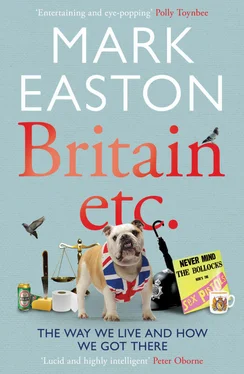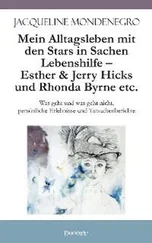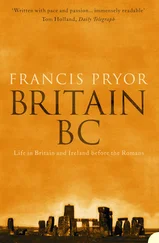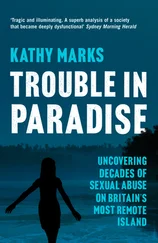Students too were quick to spot the potential benefits. The University of York student website ran interviews with Modafinil users in 2009. ‘In a typical Modafinil-fuelled night, I take the drug with dinner, go to the pub with my friends and maybe watch a film, before getting in at around 1am and working for another eight hours. It’s a productive way of living; it lets me be sociable and academic at the same time,’ said Tim. Charles explained the effects. ‘People talk about the Modafinil buzz, but there’s no high in the traditional sense. I was able to concentrate more easily, like my memory was improved. I could stay awake all night and do nothing but work without getting bored. I wasn’t “high” so much as “enhanced”.’
There were side effects, of course: fever, sore throat and nausea. A few users developed potentially fatal skin diseases and the manufacturers were obliged to update the label to include warnings of the possibility of developing Stevens-Johnson Syndrome or toxic epidermal necrolysis. No one could yet know the long-term effects of use. But it did appear that science had stumbled upon a relatively safe answer to an ancient puzzle. Modafinil, though, also posed a new question: how will humanity use its power over sleep?
My guess is that, in this country at least, a sleepless world would sound too much like a restless world — a relentless environment in which ‘Metabolically Dominant Citizens’ forget the guilty pleasure of a quiet doze in a deckchair or forty winks while pretending to watch the cricket. Britain may worry about being seen to have too much or too little of the stuff, but we have got enough to keep us awake at night without taking on the responsibilities of the great god Hypnos. And so to bed. Zzzz.
1. C. MacAndrew and R. B. Edgerton, Drunken Comportment: A Social Explanation (Aldine, 1969)
2. R. Martínez and L. Martín, ‘Patrones de consume de alcohol en la comunidad de Madrid’, Comunidady Drogas , 5–6 (1987)
3. Social Issues Research Group, Social and Cultural Aspects of Drinking: A Report to the Amsterdam Group (SIRC, 1998)
4. G. A. Marlatt, B. Demming and J. B. Reid, ‘Loss of control drinking in alcoholics: an experimental analogue’ , Journal of Abnormal Psychology , 81 (1973)
5. M. Hough, Drugs Misuse and the Criminal Justice System: A Review of the Literature , (Home Office, 1996)
6. D. B. Heath, ‘Flawed policies from flawed premises: pseudo-science about alcohol and drugs’, in R. C. Engs (ed.), Controversies in the Addictions Field (Kendall-Hunt, 1990)
1. History of the Metropolitan Police, www.met.police.uk
2. R. V. G. Clarke and M. Hough, Crime and Police Effectiveness (HMSO, 1984)
3. M. Davis, ‘Fortress Los Angeles: The Militarization of Urban Space’ in M. Sorkin (ed.), Variations on a Theme Park: The New American City and the End of Public Space (Hill and Wang, 1992)
4. G. Kelling, A. Pate, D. Dieckman and C. Brown, The Kansas City Preventive Patrol Experiment (Police Foundation, 1972)
1. M. Thatcher, Speech at Franco-British Council Dinner, 16 May 1982, www.margaretthatcher.org
2. D. B. Grigg, The Agricultural Systems of the World: An Evolutionary Approach (Cambridge University Press, 1974)
3. Anthony Woodward, ‘Design Dinosaurs: 11: Lymeswold’, Independent on Sunday , 10 April 1994
4. Sir Stephen Roberts obituary, Daily Telegraph , 19 July 2002
5. Authenticity in Food and Drinks: New Insights into Consumer Attitudes and Behaviors (Datamonitor, 2006), www.datamonitor.com
6. British Cheese Board, www.britishcheese.com
7. Capricorn Goats Cheese, www.capricorngoatscheese.co.uk
1. A. C. Swinburne, Mary Stuart: A Tragedy (Chatto & Windus, 1881)
2. E. Kienzle, ‘A comparison of the feeding behavior and the human-animal relationship in owners of normal and obese dogs’, The Journal of Nutrition , 128 (1998)
3. Canine obesity, www.csp.org.uk
4. Medical and legal implications of veterinary cosmetic surgical procedures, www.animalmedcenter.com
5. Pet Food Manufacturers Association statistics, www.pfma.org.uk
6. R. B. Lee, A History and Description of the Modern Dogs of Great Britain and Ireland (Horace Cox, 1893)
7. J. H. Walsh, The Dog, in Health and Disease, by Stonehenge (Longman, 1859)
8. A. Manning and J. A. Serpell, Animals and Human Society: Changing Perspectives (Routledge, 1994)
9. W. Secord, A Social History of the Dog in Art (Antique Collectors’ Club, 1992)
10. Report from the Select Committee of the House of Lords on Rabies in Dogs (Parliamentary Papers, 1887)
11. N. Pemberton and M. Worboys, Mad Dogs and Englishmen: Rabies in Britain, 1830 – 2000 (Palgrave Macmillan, 2007)
1. PRCA membership statistics, www.prca.org.uk
2. B. Engel, The Power of Apology (John Wiley & Sons, 2001)
3. A. Massie, ‘The art of saying sorry’, Independent , 30 September 2004
4. A. Boin, P. Hart, E. Stern and B. Sundelius, The Politics of Crisis Management: Public Leadership under Pressure (Cambridge University Press, 2005)
5. J. Grout and L. Fisher, What Do Leaders Really Do? (John Wiley & Sons, 2007)
6. A. Barry, Political Events (University of London, 2002)
7. C. Hood, The Blame Game: Spin, Bureaucracy and Self-preservation in Government (Princeton University Press, 2011)
1. Social Justice Policy Group, Breakthrough Britain: Ending the Costs of Social Breakdown (Centre for Social Justice, 2007), www.centreforsocialjustice.org.uk
2. The UK Family: In Statistics (BBC/ICM, 2007)
3. J. Bowlby, Forty-four Juvenile Thieves: Their Characters and Home-life (Baillière, Tindall & Cox, 1946)
4. R. Berthoud, ‘Family formation in multi-cultural Britain: diversity and change’, in G. Lowry, T. Modood and S. Teles (eds.), 6. Ethnicity, Social Mobility and Public Policy (Cambridge University Press, 2005)
5. L. Platt, Ethnicity and family: Relationships within and between ethnic groups: an analysis using the Labour Force Survey (Institute for Social & Economic Research, 2009)
6. A. Giddens, ‘Family’, Runaway World (BBC Reith Lectures, 1999)
7. P. Thane, Happy Families? History and Family Policy (British Academy, 2010)
8. Doing Better for Children (OECD, 2009), www.oecd.org
1. F. L. Olmsted, Walks and Talks of an American Farmer in England (Harvard University, 1852)
2. Report of the Select Committee on Public Walks (Parliamentary Papers, 1833)
3. J. C. Loudon, The Utility of Agricultural Knowledge to the Sons of the Landed Proprietors of Great Britain, &c, by a Scotch Farmer and Land-Agent (1809)
4. J. C. Loudon, Hints for Breathing Places for Metropolis, and for Country Towns and Villages, on Fixed Principles (Longman, Rees, Orome, Brown and Green, 1829)
5. A. F. Prévost, Mémoires et aventures d’un homme de qualité qui s’est retiré du monde (M. G. Merville & J. Vander Kloot, 1728)
6. Down with the Fences: Battles for the Commons in South London (Past Tense Publications, 2004)
7. Urban Task Force, Green Spaces, Better Places (DTLR, 2002)
Читать дальше












